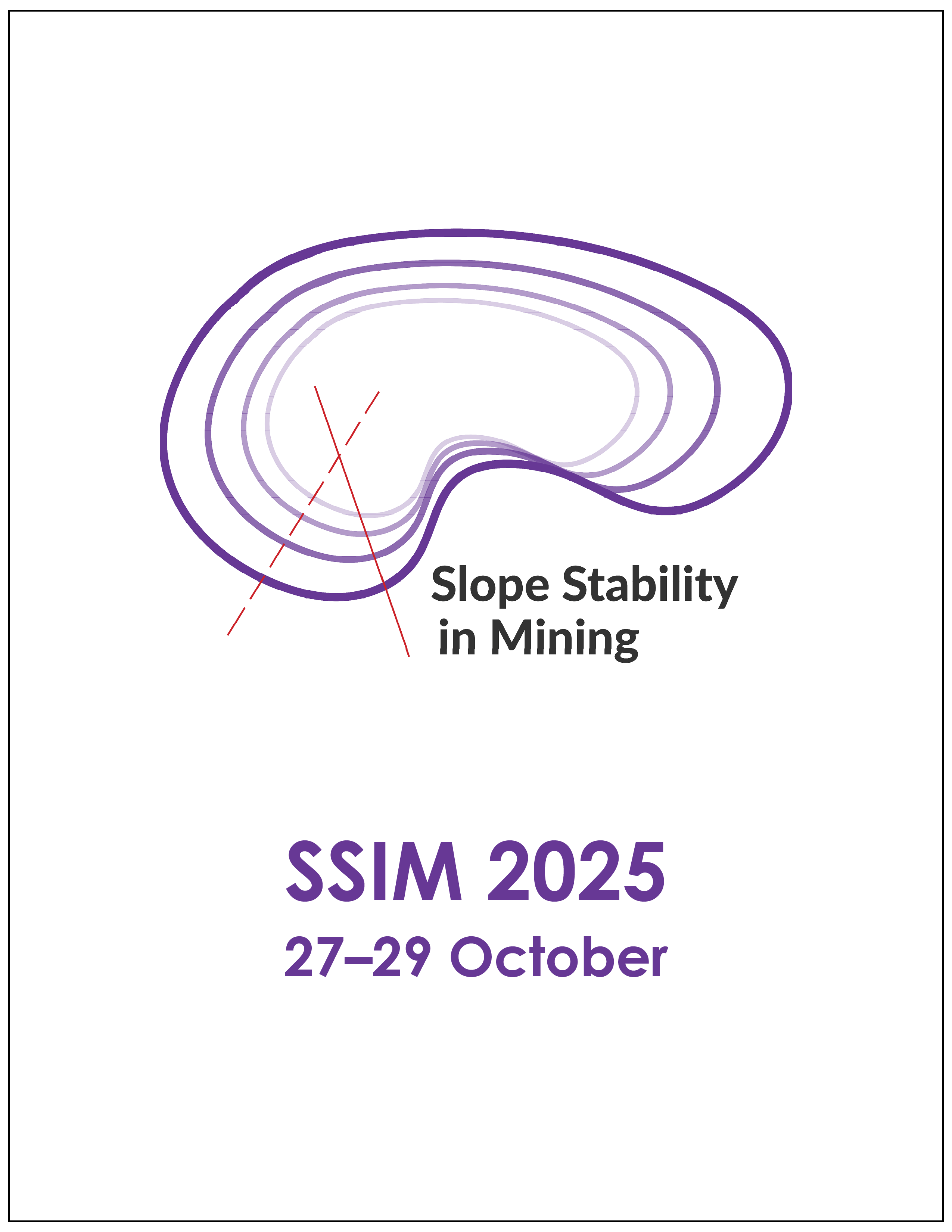Considerations for optimal assessment of bench–berm stability and design in competent, fractured rock masses

|
Authors: Spirin, V; de Bruyn, I; Mylvaganam, J; Lium, D |
DOI https://doi.org/10.36487/ACG_repo/2535_07
Cite As:
Spirin, V, de Bruyn, I, Mylvaganam, J & Lium, D 2025, 'Considerations for optimal assessment of bench–berm stability and design in competent, fractured rock masses', in JJ Potter & J Wesseloo (eds), SSIM 2025: Fourth International Slope Stability in Mining Conference, Australian Centre for Geomechanics, Perth, https://doi.org/10.36487/ACG_repo/2535_07
Abstract:
In competent rock masses, a focus on bench stability during slope design is crucial, as the achievable overall slope angle is often constrained by appropriate bench–berm geometry rather than overall rock mass strength. However, optimising bench–berm configurations is a complex process that requires considering multiple discontinuity-related input parameters and identifying the most significant ones that control design in each domain. The wide range of available tools and methods for assessment can lead to varying outcomes, and design decisions often rely on experience and engineering judgement – both in selecting appropriate analysis methods and in interpreting their results. Consequently, identifying key factors and streamlining the design analysis process are essential for improving efficiency and optimising bench–berm configurations. Stereographic analyses are useful for quick and straightforward assessments. Simple block-based analyses are necessary for optimisation of bench and berm design. In some cases, more advanced techniques may be beneficial; stochastic joint network analysis allows for the analysis of complex, irregularly shaped failure mechanisms. The results of simple block-based and stochastic joint network analyses are typically expressed in terms of Factor of Safety and probability of bench failure, as well as crest loss, failure volume and spill width, which reflect berm retention capacity. These outcomes are highly sensitive to input parameters such as discontinuity orientation, spacing, persistence, and shear strength, making calibration and sensitivity analysis essential. Using case studies, this paper compares several methods for assessing Probability of Failure and spill width, and highlights their influence on bench face angle and berm width justification. The results demonstrate consistent outcomes when key controlling factors are properly considered; however, when failure mechanisms involve contributions from multiple joint sets, advanced methods are required.
Keywords: bench–berm design, Probability of Failure, berm retention capacity, crest loss, spill width
References:
Bonnet, E, Bour, O, Odling, N, Davy, P, Main, I, Berkowitz, B & Cowie, P 2001, ‘Scaling of fracture systems in geological media’, Reviews of Geophysics, vol. 39, no. 3, pp. 347–383.
Bowles, JE 1990, Foundation Analysis and Design, 4th edn, McGraw-Hill, New York.
Esterhuizen, GS 2025, SBlock, computer software, https://sites.google.com/view/ayzprojects
Gibson, W 2015, MWedge, computer software.
Gibson, W, de Bruyn, I & Walker, D 2006, ‘Considerations in the optimisation of bench face angle and berm width geometries for open pit mines’, Proceedings of the International Symposium on Stability of Rock Slopes in Open Pit Mining and Civil Engineering, The Southern African Institute of Mining and Metallurgy, Johannesburg, pp. 559–578.
Goodman, RE & Shi, GH 1985, Block Theory and its Application to Rock Engineering, Prentice-Hall, Englewood Cliffs.
Hoek, E 2009, ‘Fundamentals of Slope Design’, Slope Stability 2009: Proceedings of the International Symposium on Slope Stability in Open Pit Mining and Civil Engineering, 9–11 November 2009, Santiago, Chile, Australian Centre for Geomechanics, Perth.
Hormazabal, E 2013, ‘Bench berm design using probabilistic key block analysis’, in PM Dight (ed.), Slope Stability 2013: Proceedings of the 2013 International Symposium on Slope Stability in Open Pit Mining and Civil Engineering, Australian Centre for Geomechanics, Perth, pp. 227–236,
Hormazabal, H, Prudencio, M & Cofre, M 2019, ‘Design and performance of rock slopes at bench scale’, paper presented at 1st Bolivian Congress on Rock Mechanics, CONBOLMER, Cochabamba.
Read, J & Stacey, P (eds) 2009, Guidelines for Open Pit Slope Design, CSIRO Publishing, Collingwood.
help/rocplane/verification-theory/theory-manuals
Rocscience 2025, Dips, computer software, https://www.rocscience.com/software/dips
Rylnikova, MV & Zoteev, OV 2022, Guidelines for Determining the Parameters of Pit Slopes, Benches, and Waste Dump Slopes, IPKON RAS, Moscow.
WSP 2025, FracMan, computer software, https://www.wsp.com/en-gl/services/fracman
© Copyright 2025, Australian Centre for Geomechanics (ACG), The University of Western Australia. All rights reserved.
View copyright/legal information
Please direct any queries or error reports to repository-acg@uwa.edu.au
View copyright/legal information
Please direct any queries or error reports to repository-acg@uwa.edu.au

